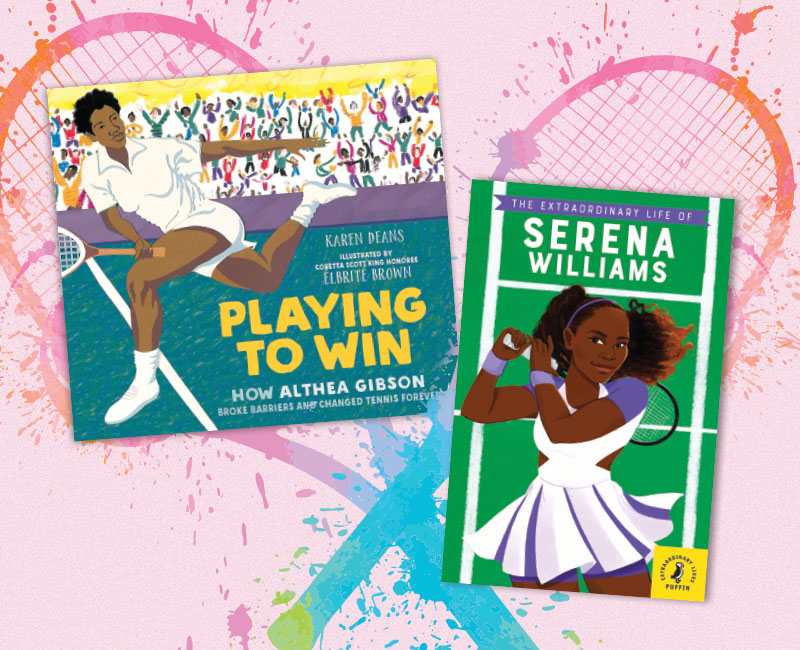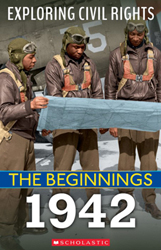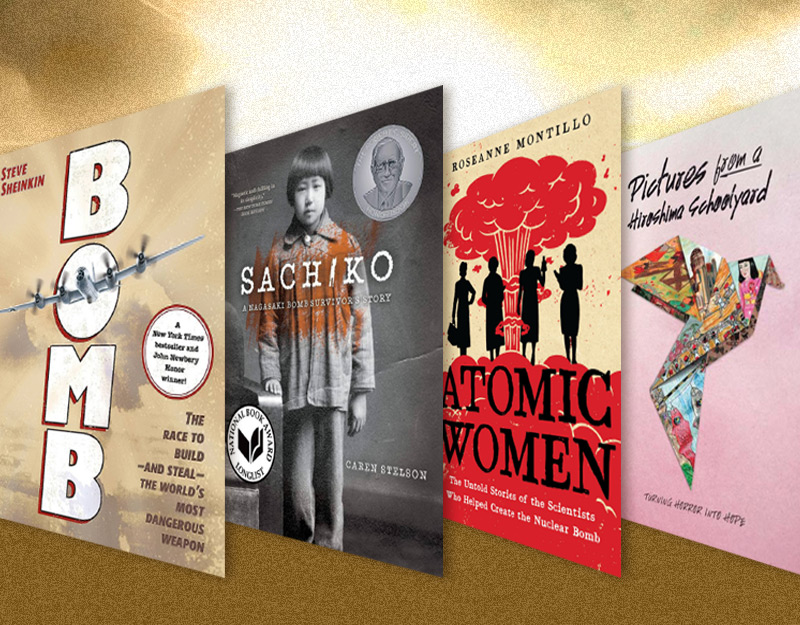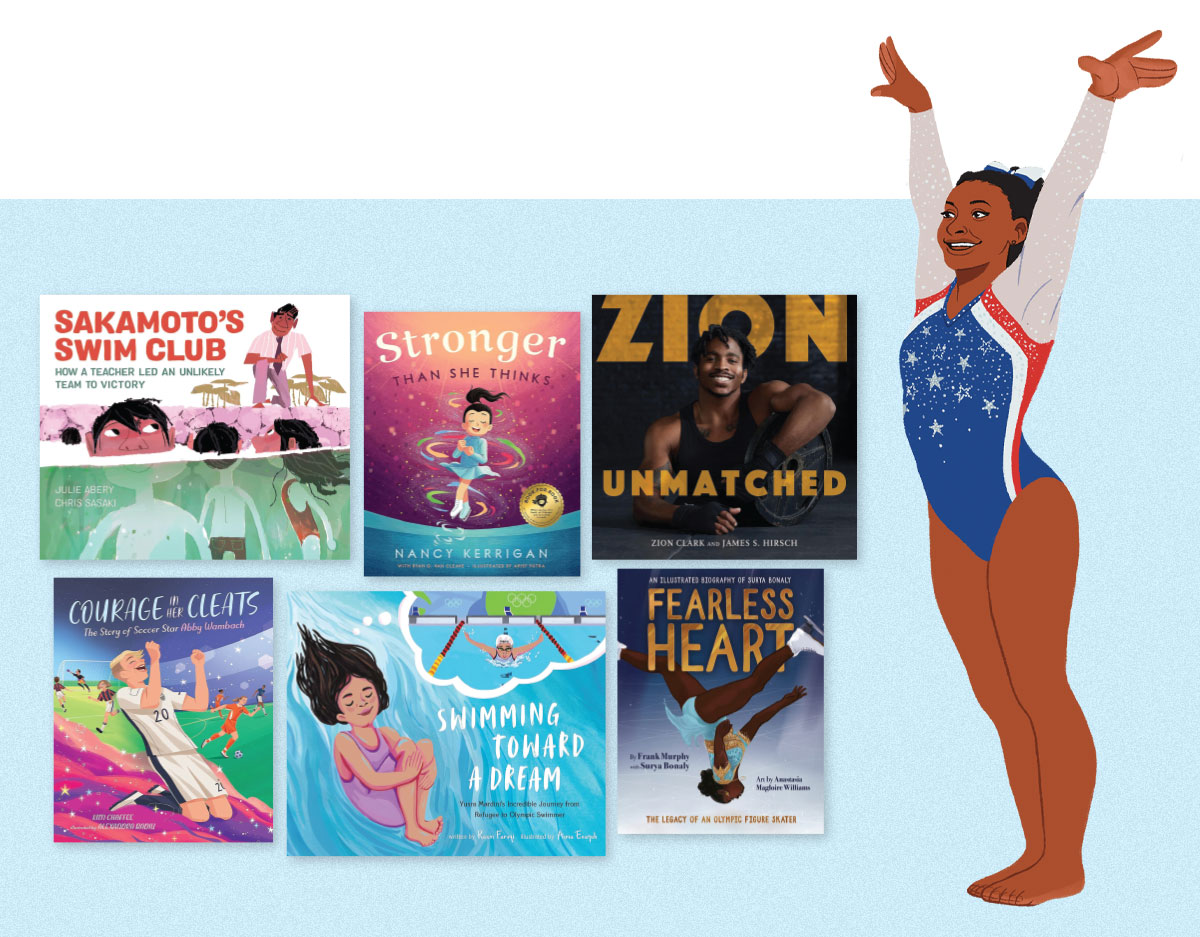Flying Lessons and Other Stories
Flying Lessons and Other Stories
Edited by Ellen Oh
Published in 2017 by Crown Books for Young Readers
ISBN: 978-1-101-93459-3
Grades 4-6
Book Review
Don’t we all have “milk-snorting-out-of-your-nose…listen-to-how-cool-and-awesome-we-are…come-close-so-we-can-whisper-in-your-ear” stories? In this groundbreaking anthology, published in partnership with We Need Diverse Books and edited by its co-founder Ellen Oh, are ten stories by an all-star line-up of authors: Kwame Alexander, Kelly J. Baptist, Soman Chainani, Matt de la Peña, Tim Federle, Grace Lin, Meg Medina, Walter Dean Myers, Tim Tingle, and Jacqueline Woodson. De la Peña’s opening story, told in second-person point of view, pulls readers in to the heart-stopping narrative of a young basketball player proving his worth on and off the court. Undeterred by the 4:30 A.M alarm each morning, or by the cop knocking on the windshield during a power nap session, or by taunts of ‘go back to the barrio, ese’, the day finally comes when he gets to prove his skills on the court. Meg Medina’s story of a father and his children painting a private school’s gymnasium positions readers to consider why parents may choose to be invisible to ensure their children never have to. Woodson’s “Main Street” masterfully focuses on the internal thinking of Treetop, an eleven-year-old girl who recently lost her mother to cancer. When Celeste, the new girl and only girl of color in their all-white New Hampshire town, smiles at Treetop a life-changing friendship is formed. Soman Chainani’s “Flying Lessons” will have readers wanting to curl up and disappear on behalf of teenaged Santosh who is on a European vacation with his eccentric grandmother. Life lessons abound as Santosh comes to realize that he and his Nani are really both struggling with the same human need to belong. Walter Dean Myers’ “Sometimes a Dream Needs a Push” leaves readers with a final story full of emotion as a boy joins a wheelchair basketball team following in the path of his basketball star father. The book includes an about the authors section highlighting the accomplishments of each contributing author. There is also an about section on the We Need Diverse Books movement that provides historical context and explains the advocacy projects the organization has initiated. Each masterful story could certainly stand alone, but gathered together in one collection makes this a must-have addition for every middle grade classroom library.
Teaching Ideas / Invitations for Your Classroom:
Defining “Diverse”. The stories in this anthology are well-told stories. But, these stories are also selected because they broaden readers’ ideas about the power of diverse stories, in particular. What does diverse mean? Gather students’ ideas before reading Flying Lessons and Other Stories. Ask for students to expand on their initial ideas throughout the book by including human, cultural, linguistic, and family diversity. Support students to consider the ways in which reading diverse stories helps us recognize the seemingly contradictory uniqueness and universal nature of stories. In what ways are our own stories affirmed by reading the stories of others? In preparation for these discussions, you may want to consult the National Council of Teachers of English Resolution on the Need for Diverse Children’s and Young Adult Literature as well as NCTE’s Position Statements on Diversity.
ADVERTISEMENT
ADVERTISEMENT
The Power of Relationships. Each of these stories is about the power of human relationships, the lessons we learn from others, and the ways in which others often surprise us in life. Support students to read with a focus on the human relationships in each story. Consider having students select a story to map the relationships between the characters including family members, community members, and even rivals. Tools such as Popplet offer digital possibilities for webbing the connections between characters.
Story Reviews. Have students select a story that made a significant impact on their thinking to have them write a story review. Have students include a brief summary, opinion, and recommendation. Have students immerse themselves in the genre of writing reviews by reading from sites such as goodreads as well as Kirkus Reviews, School Library Journal, as well as The Classroom Bookshelf. Gather your students’ reviews onto a class blog page or (with permission from the school) encourage students to post their reviews on goodreads.
Author Study. Have students select an author from the anthology to learn more about. Support students in small groups to build their own author study by reading the author’s books and by finding news articles about each author as well as video interviews. As a class, follow the authors on Twitter and read some of their most recent posts. Have groups present their author studies to the class through multimedia presentations that can include: reviews of books, timelines, the author’s influences, and awards. Encourage groups to send letters or Twitter messages to the authors.
Cross-Cutting Themes. Friendships gained and lost, sibling rivalry, the embarrassment of relatives, first crushes, dreams deferred, the surprises and challenges that school can bring are just some of the cross-cutting themes in the book. Support students to notice and name the universal human experiences that the authors write about. Which stories and themes resonate with students the most? Why? Consider building a class display about the themes that are found in the stories and support student to notice these themes in other works of literature but also in songs, works of art, poetry, film, and television. You could organize students into “theme teams” to find other examples of the theme that they are exploring to share with others.
Playing with Point of View. Each of the author’s has made a pointed decision to write from a particular point of view to support readers to see and hear what is going on in the story. Support students to consider who is telling each story and how the narrator positions us as readers to identify with the story being told. How does Grace Lin’s choice to use first-person singular point of view impact our thinking about Lingsi’s path as a servant, scholar, and pirate? Likewise, how does first-person singular point of view help us better understand the pressure Sam faces to pick a good elf name in Tim Federle’s “Secret Samantha”? How does Matt de la Peña’s choice to use second-person point of view impact our experience as readers? Or how does Tim Tingle’s talk to readers right from the first sentence of “Choctaw Bigfoot, Midnight in the Mountains” supporting us as readers to be sitting right alongside Uncle Kenneth? As students write their narratives throughout the year, refer them to Flying Lessons and Other Stories to find mentor texts with a particular focus on point of view.
Playing with Structure. Many of the stories follow a traditional narrative structure, however, some of the authors play with the ways narrative can take shape. Have students think about the structural choices the authors made. For example, in what ways does Kwame Alexander effectively use poetry to craft a fictional memoir? How does he play with structure to tell a playful story? Compare Alexander’s structural choices to Kelly Baptiste’s in “The Beans and Rice Chronicles of Isaiah Dunn”. In what ways are diary entries a structural means for us to better understand Saiah’s point of view? Support students to think further by considering the ways structural choices can help create tone and mood.
Dedication Investigation. Flying Lessons and Other Stories is dedicated to Walter Dean Myers and uses the final sentence from his op-ed piece from The New York Times in 2014, “There is work to be done.” Start an inquiry into this dedication by supporting students to read Walter Dean Myers’ New York Times op-ed from 1986 as well as 2014. Gather books by Walter Dean Myers for students to select for independent reading or form book clubs around select titles. Support students to consider the ways in which Myers’ books reflect the messages in his op-ed pieces.
ADVERTISEMENT
ADVERTISEMENT
We Are Not Alone: The Importance of Mirrors. One of the great powers that stories have is that when we see ourselves represented in the pages of a book it reminds us that we are not alone. Characters can provide cultural mirrors for us but they can also become mirrors when they experience the same emotions we do. Consider having students write about the stories that feel like mirrors for them by writing letters to you, the class, or the author. Create opportunities for your students to share the “mirror moments” they experience as readers of Flying Lessons but consider making this a year-long framework for the way you talk about stories and characters. Remember the great vulnerability involved in sharing one’s own story as well as the connections one has to characters and stories. We recommend that sharing “mirror moments” always be optional rather than required.
Learning from Discomfort: The Importance of Windows. As important as it is to be validated from the stories we read, stories also remind us that our story is not the only story. At times, some of the stories in this collection may evoke feelings of discomfort. Rather than dismiss this feeling, we recommend that students take note of their discomfort and consider these as “window moments” or opportunities to learn about others’ life experiences. Engage the class in discussion of what we gain as human beings and what our society gains when we read stories and books that have “window moments” for us as readers.
From Reading to Writing. Flying Lessons and Other Stories offers students ten mentor texts for powerful narrative writing. Brainstorm with the class the ways in which the stories serve as mentor texts include: how they are structured, the craft techniques the authors use (ie., dialogue, internal thinking), the use of sentence variety including fragments for effect, particular word choice, as well as how voice is created. As students compose their own narratives, have them consult their favorite mentor texts in this collection to draw inspiration as well as particular techniques for making their narratives even more effective. Publish student stories in an anthology titled by the class. Consider sending it to Ellen Oh with a class-composed letter about how the stories in Flying Lessons led to the class’s publication.
Critical Literacy
We Need Diverse Books Local Campaign. Learn more about the We Need Diverse Books organization by researching the origin or the organization as well as the initiatives in children’s literature they have begun. View their Tumblr page to learn more about new titles that are promoted by the WNDB group. View recent posts that have used the #WeNeedDiverseBooks on Twitter and Instagram. Start your own WNDB Campaign as a class by advocating for more diverse titles in your classroom or school library. Consider joining the Reading Without Walls initiative launched by Gene Luen Yang, National Ambassador of Young People’s Literature. Document your reading as a class by using the #ReadingWithoutWalls on social media platforms.
Further Investigations
Online Resources
We Need Diverse Books Site
http://weneeddiversebooks.org/
Reading Without Walls Challenge
http://geneyang.com/the-reading-without-walls-challenge
National Council of Teachers of English Resolution on the Need for Diverse Children’s and Young Adult Literature
http://www.ncte.org/positions/statements/diverse-books
NCTE’s Position Statements on Diversity
http://www.ncte.org/positions/diversity
Kwame Alexander’s Site
Kelly Baptiste’s Site
Soman Chainani’s Site
Matt de la Peña’s Site
Tim Federle’s Site
Grace Lin’s Site
Meg Medina’s Site
Walter Dean Myers’ Site
Ellen Oh’s Site
Tim Tingle’ site
Jacqueline Woodson’s Site
Books
Alexander, K. (2016). Booked. Boston, MA: Houghton Mifflin Harcourt.
https://www.theclassroombookshelf.com/2016/05/booked/
Alexander, K. (2014). The crossover. Boston, MA: Houghton Mifflin Harcourt.
https://www.theclassroombookshelf.com/2015/02/2015-newbery-medal-winner-the-crossover/
Chainani, S. (2014). The school for good and evil (series). New York, NY: HarperCollins.
de la Peña’s, M. (2015). Last stop on market street. New York, NY: G. P. Putnam’s Sons.
https://www.theclassroombookshelf.com/2015/03/last-stop-on-market-street/
Federle, T. (2014). Better Nate than ever. New York, NY: Simon & Schuster for Young Readers.
Lin, G. (2011). Where the mountain meets the moon. New York, NY: Little, Brown Books for Young Readers.
Medina, M. (2015). Mango, abuela, and me. Cambridge, MA: Candlewick Press.
Myers, W.D. (2004). Monster. New York, NY: Amistad.
Tingle, T. (2015). How I became a ghost: A Choctaw trail of tears story. Oklahoma City, OK: Roadrunner Press.
Woodson, J. (2012). Beneath a meth moon: An elegy. New York, NY: Nancy Paulsen Books.
https://www.theclassroombookshelf.com/2012/11/each-kindness-and-beneath-a-meth-moon/
Woodson, J. (2012). Each kindness. New York, NY: Nancy Paulsen Books.
https://www.theclassroombookshelf.com/2012/11/each-kindness-and-beneath-a-meth-moon/
Woodson, J. (2016). Brown girl dreaming. New York, NY: Nancy Paulsen Books.
https://www.theclassroombookshelf.com/2014/12/brown-girl-dreaming/
Filed under: Announcements, Short Story Anthology
About Katie Cunningham
Katie is a Professor of Literacy and English Education at Manhattanville College. There she is also the Director of the Advanced Certificate Program in Social and Emotional Learning and Whole Child Education. Her work focuses on children’s literature, joyful literacy methods, and literacy leadership. Katie is the author of Story: Still the Heart of Literacy Learning and co-author of Literacy Leadership in Changing Schools. Her book Start with Joy: Designing Literacy Learning for Student Happiness will be released September 2019. She is passionate about the power of stories to transform lives.
ADVERTISEMENT
ADVERTISEMENT
SLJ Blog Network
One Star Review, Guess Who? (#211)
Cover Reveal and Q&A: Dusti Bowling’s Latest – The Beat I Drum (Apr 2025)
Girlmode | Review
The Seven Bills That Will Safeguard the Future of School Librarianship
Read Rec Rachel: New YA Releases for November and December 2024
Gayle Forman Visits The Yarn!
ADVERTISEMENT








